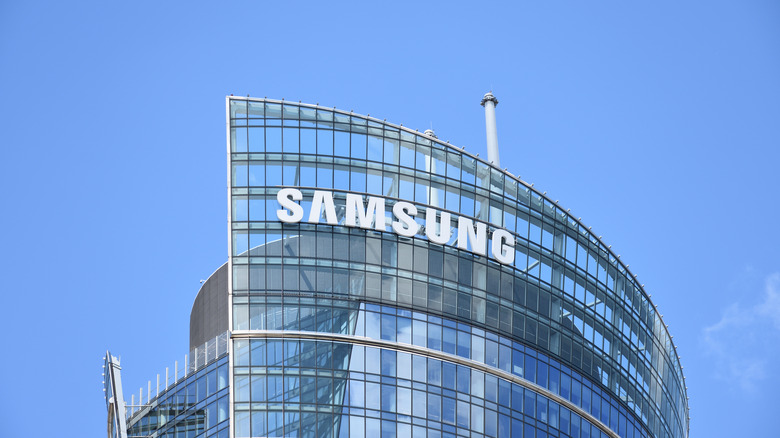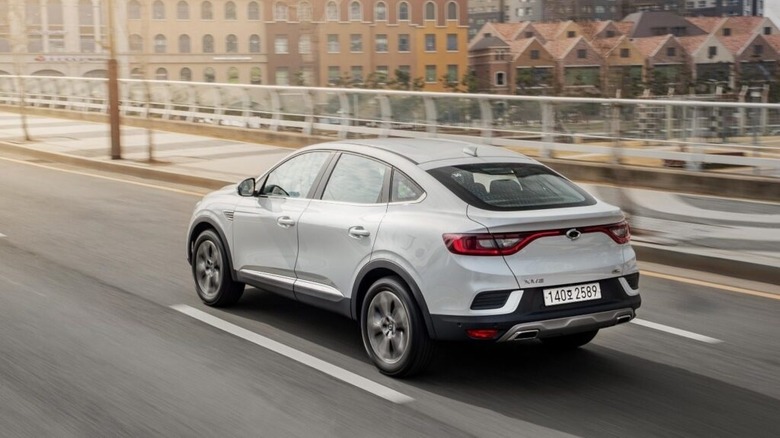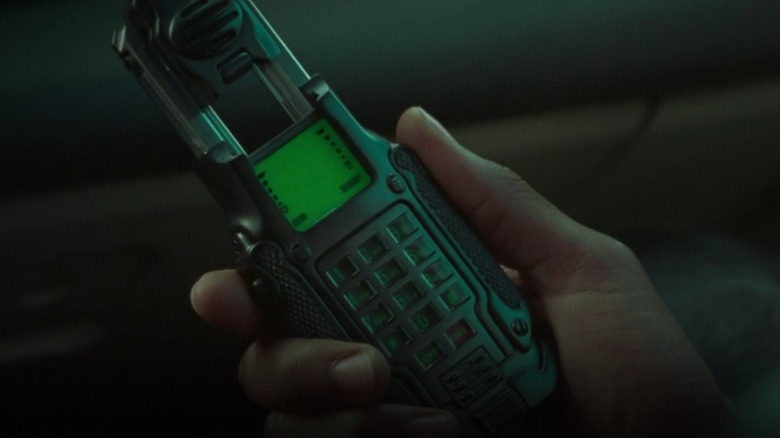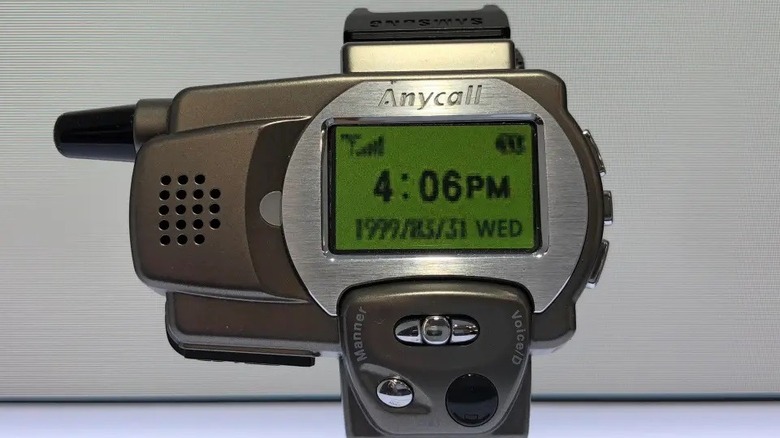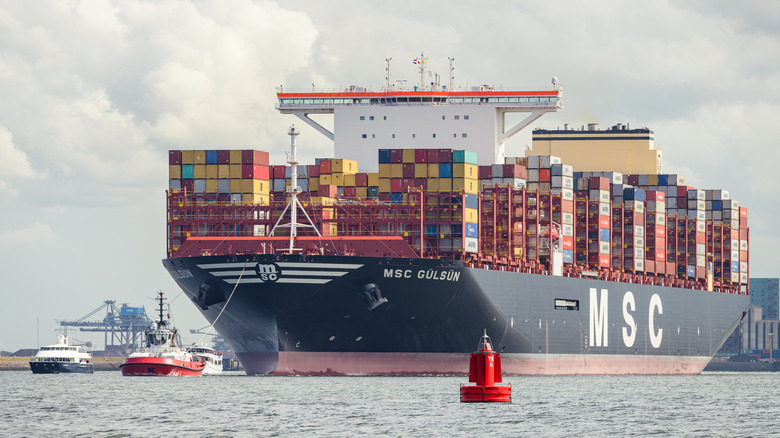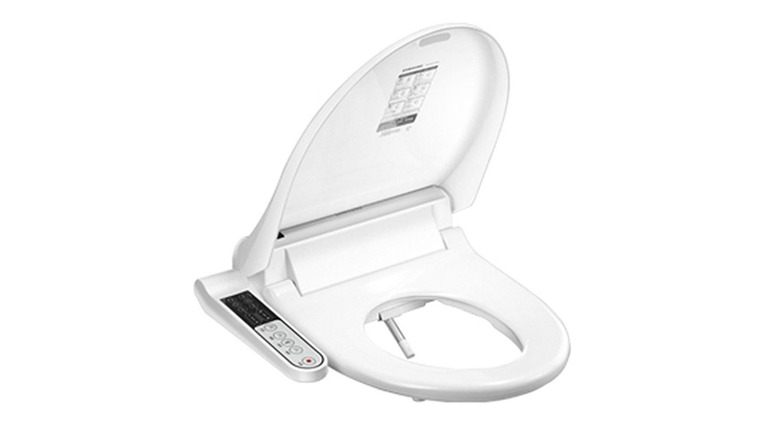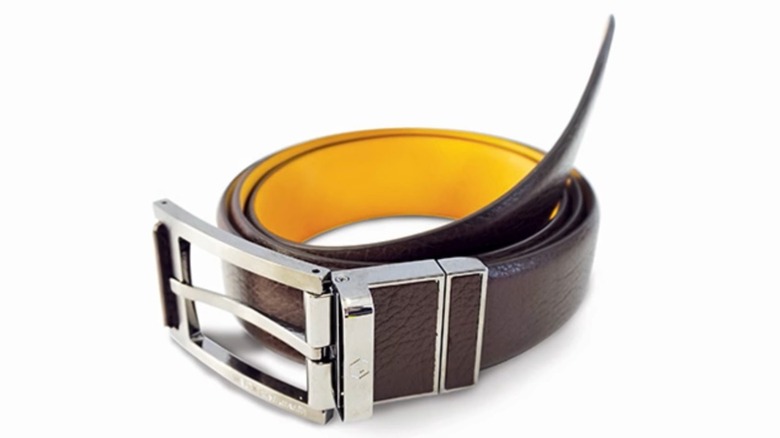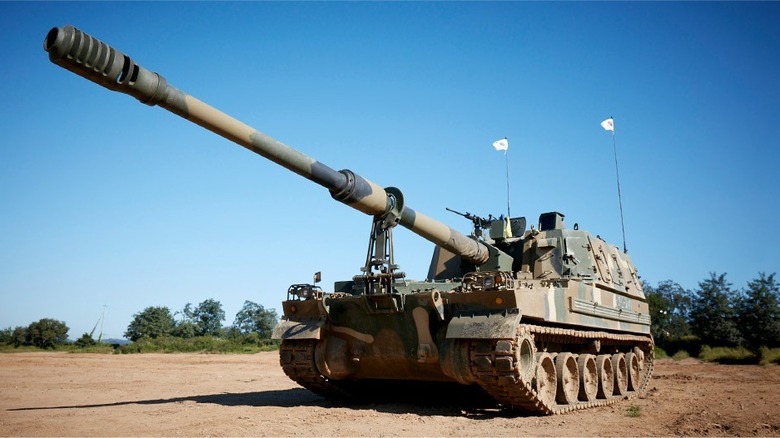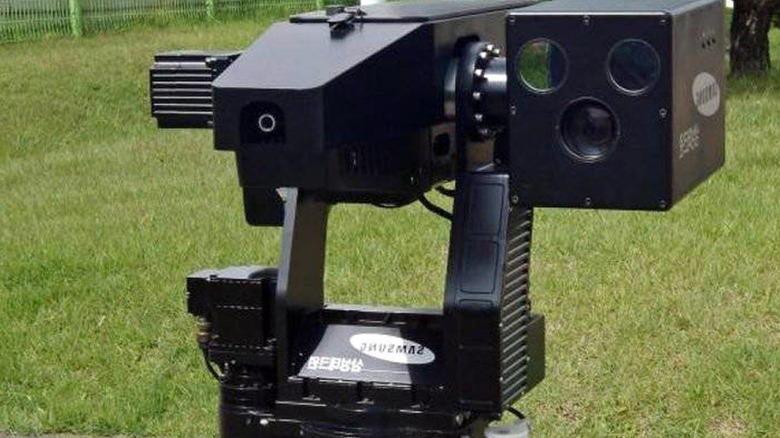10 Rare Samsung Products You Probably Didn't Know Existed
At present, Samsung is largely known as a manufacturer of mobile phones, televisions, appliances and other electronics. You can find their brand name plastered across all manner of consumer electronics from their popular Galaxy phones to tablet computers and more. In 1938, however, when Lee Byung-Chull started the company in Taegu, Korea, they were in a totally different business.
As explained by Britannica, Lee got his start trading noodles and other products around the city as well as exporting them to China. Later, he opened a wool mill and moved the company into textiles. Over the next couple of decades, Samsung acquired banks, insurance companies, and any other company it could swoop up, expanding the services it offered.
It wasn't until the late '60s that Samsung first broke into electronics and, while it continued to have a diverse portfolio of operations, the company emerged as one of the top electronics developers and manufacturers in the world, (per Companies Market Cap). Still, the brand is built on a legacy of innovation and experimentation. That diversification has allowed the company to create an impressive and sometimes unexpected collection of products which you might not expect from its more public image.
Samsung motors
While Samsung has been an incredibly successful company, growing rapidly from the earliest days, not every venture is a runaway success. Such is the case with Samsung Motors. In the '90s, Samsung decided it wanted to get into the automotive game, resulting in the creation of Samsung Motors in 1994. Only four years later the company was selling its first cars, but the timing was terrible, with the Asian financial crisis on the horizon, (per Academic Dictionaries and Encyclopedias).
In 2000, two years after their first cars rolled off the lot, most of the company was sold to Renault, a French automaker, for approximately $78 billion U.S., with Samsung retaining about 18% of the company, (per The Korea Herald).
That relationship remained for just over two decades, as Renault Samsung grew into one of the top three car manufacturers in Korea, (per Renault Group). After 22 years as partners, the relationship is set to expire in August of 2022, with the company reverting entirely to Renault, (per Just Auto). As of March 2022, Renault Samsung Motors has rebranded to Renault Korea Motors. If you want to get your hands on a Samsung branded car, you're going to have to do it on the secondary market.
Everland amusement park
It is a truth universally acknowledged that a corporation in possession of a fortune, must be in want of an amusement park. Most companies never pull it off and those that do tend to struggle against the likes of Disney and Universal, but Samsung found a way.
On April 17, 1976, the Everland amusement park opened outside of Seoul, under the name Yongin Farmland, (per Samsung). The initial layout included just nine rides, botanical gardens, and a free-range animal park and petting zoo. Over the years, the park has expanded to include five different themed zones which will take you all over the world, (per Klook).
One of Everland's crown jewels is the zoo, dubbed Zootopia, where attendees can get up close and personal with animals from all over the world including a pair of pandas. Ai Bao and Le Bao, both adult pandas, were given to the park as a state gift from the Chinese government in 2016 (per NBC).
After several years at the park, Ai Bao and Le Bao successfully mated, and their first cub was born in 2020, (per The Association of Zoos & Aquariums). The baby, who was named Fu Bao, is the first Giant Panda to ever be born in Korea. So, in a roundabout way, Samsung makes pandas, among the rarest of captive-bred animals.
Samsung Matrix
When "The Matrix" released in 1999, it sparked a ton of interest in the cyberpunk aesthetic. While most of the technology on display in the film only exists in the fictional machine-ruled future, there was one bit of tech you could get, that sweet phone Neo uses at the start of the flick. That phone was the Nokia 8110 and its sliding mechanic to reveal the keyboard was at the cutting edge of mobile technology.
In 2003, as the world was preparing for the sequel to one of the most successful and beloved science fiction movies of all time, Samsung was gearing up for the ultimate tech tie-in. Like most sequels, the movie had to up the ante with all-new tech and this time Samsung got in on the action, designing a new device for New, Trinity, and Morpheus to communicate with. Thus, was born the SPH-N270, better known by its colloquial name, the Samsung Matrix, (per CNET).
The SPH-N270 was a limited-edition device which looked exactly like the phone from the movie (the second movie that is — "The Matrix Reloaded"), although it did not allow you to communicate with the digital computer-dwelling avatars of your friends. The exact number of phones produced is unclear, with numbers ranging between 2,500 and 10,000.
Today, they can only be found through resale on sites like eBay, and rarely at that. Much like the red or the blue pill, if you didn't snatch one up when you had the chance, you might never get the opportunity again.
SPH-WP10 Wrist Phone
Ever since viewers saw James Bond and Dick Tracy talk into wrist-mounted communication devices, we've been pining to quite literally talk to the hand. Today, thanks to Apple and other mobile phone manufacturers, smartwatches are practically ubiquitous.
A huge swath of the population is walking around with advanced computers and communications devices strapped to their wrists. Funny enough, we mostly use them to count how many steps we've taken in a day or check notifications. Almost no one actually uses them to make phone calls. The reality of a thing rarely matches up with our expectations.
While Apple gets a lot of the credit for making watch phones a reality, Samsung beat the Apple Watch to the punch by fifteen years, when it released the SPH-WP10, in 1999. In essence, the SPH-WP10 was a shrunken down cell phone, turned sideways, and connected to a wrist strap. It did tell time, but that wasn't atypical for cell phones of the time, and it was capable of making phone calls, (per Phone Arena).
It did exactly what a watch phone promises, allowing a user to make phone calls from their wrist. It even had a number of cool functions, like making hands-free calls with your voice. Its downfall was really the technological limitations of the late '90s, particularly the limited battery life and uncomfortably bulky design.
Samsung has the honor of getting to the party early, but that sadly meant it partied by itself.
Shipping vessels
If you're going to be a player in the consumer electronics space, that means you have to be able to get your products all over the world in a timely fashion. Why rely on someone else to do that for you if you can just do it yourself? That appears to be the philosophy Samsung takes with regard to shipping. That's where Samsung Heavy Industries comes in. Though, its shipping operations are not limited to its own products.
Samsung Heavy Industries is one of the subsidiaries born out of the company prior to the jump to electronics. In recent years it has produced some of the largest ships in the world. These Q-Max ships, so named because they are the largest ships able to dock at the Qatari harbor, are designed for carrying natural gas, (per Marine Insight).
In 2021, Samsung Heavy Industries signed contracts to build additional ships, both for carrying natural gas and for moving thousands of shipping containers all on a single vessel, (per Ship Technology).
Shipping containers aren't the most common thing you're likely to encounter, but they aren't necessarily rare, either. Where things get really interesting is in Samsung's ongoing innovations. As explained by the Korea Economic Daily, the company is working toward autonomous shipping vessels which could navigate the open seas while avoiding obstacles including other ships, all without a crew. Now, that's a rare ship.
Oil refineries
In 1970, the Korean government started a state-run program known as Korea Engineering with the aim of developing enhanced infrastructure within their borders. Before the decade was out, the firm was acquired by Samsung but retained the original name. In 1991, the firm rebranded under the Samsung name and became Samsung Engineering.
Over the next several decades, Samsung increased operations both in Korea and abroad, spinning up chemical production plants for processing Barium Carbonate and eventually oil refineries. Since 2010, the company has developed end-to-end hydrocarbon processes allowing them to take oil from its crude form, all the way through refinement and to the power plant while remaining entirely inside the Samsung pipeline.
The company's track record has been sufficient to keep new contracts, including a new oil refinery in Algeria, (per Business Korea), and Mexico, (per Global Energy Infrastructure). While Samsung's energy activities are growing, the data suggests its days are numbered.
The amount of oil being produced and consumed globally has more or less leveled off in recent years and is in fact shrinking in terms of percent energy used, thanks to increases in renewable sources like hydro, wind, and solar, (per Our World in Data). In 2019, oil accounted for just under 31% of total global energy. The last time the mix was that low, we were gearing up to go to the Moon. If trends continue as they are, oil refineries will be a thing of the past relatively soon.
Digital toilet seats
We don't like to think about it, but having access to a clean, convenient, and comfortable place to handle your body's excretory needs is hugely important. Humans realized pretty early on that a system for whisking away a person's waste was a nice thing to have. Designated places for using the bathroom, with some form of flushing water, date back to at least a few thousand years ago, (per The British Association of Urological Surgeons).
Once the flush toilet was invented by Sir John Harrington, and later refined by the appropriately named Thomas Crapper and Alexander Cummings, toilet innovations largely related to making them more comfortable, with better seating. Things haven't changed a whole lot over the last couple centuries. It turns out, there are only so many ways you can build a device for that specific use. However, that hasn't stopped Samsung from designing toilets seats which will make you feel like your water closet exists inside a portal to the 24th century.
A cursory look at Samsung's collection of toilet seats (UPDATE: Samsung's "RoundToiletSeat" website is no longer active) reveals a loyalty to the creed that there's nothing you can't improve by incorporating technology. For only a few hundred dollars you can do your business on a toilet seat that will keep your backside warm and clean you off when you're finished, all with a couple presses of a button.
Wellness belt
Wearable technology is an increasingly common part of modern life. Many of us have at least one device we wear or carry on our bodies to gather data and report back us. Most of them shame you about your body, but that really says more about us than the devices themselves. Samsung's wearable belt cuts right to the quick, removing the middleman by going right around your middle, man.
Unveiled at CES 2016, the Welt — short for Wellness Belt — looks suspiciously like an ordinary belt. All of its best bits, including sensors and a charging port, are hidden in the buckle, (per The Verge). The belt's sensors are capable of tracking your steps, measuring your waistline, and delivering that information to a dedicated app on your smartphone. It even tracks belt tension throughout the day to tell you when you've eaten too much, (per Insider). It's basically a digitally powered shame accessory. Neat!
The Wellness Belt's biggest flaw, aside from making body shame more efficient, is the name. Welt sounds more like the marks a belt leaves on your body when you're hit with one, than the name of a cool new wearable. Luckily, the Welt isn't actually on the market, it came out of Samsung's Creative Lab and wasn't intended for mass production, at least not yet. Probably for the best.
Tanks, for battle, not for fish
Consumer electronics might be the face of Samsung, but it should be clear to this point that they aren't averse to dipping their fingers in other industries, and that extends to defense. During the company's diversification in the 1970s, it established Samsung Precision Company, later Samsung Techwin, as one of its subsidiaries, (per Britannica).
Later, Samsung partnered with Hanwha, who eventually acquired Samsung Techwin in total, and developed, among other things, the K9 self-propelled howitzer. This 47-ton tank has automated firing capabilities, integrated cameras for thermal and video imaging, an armored exterior, and can fire up to eight rounds a minute. These machines are, of course, in use in Korea, but have also been exported Turkey, Poland, Finland, India, Norway, and Estonia, (per Hanwha).
It comes equipped with a 155mm gun, explosive projectiles, and can protect its crew from incoming gunfire and armor-piercing rounds. It's basically a rolling bunker good enough at doing its job to have portions of the rest of the world asking for them. According to Army Technology, the Australian Army should be getting some of their own any day now.
Unlike much of Samsung's portfolio, their tanks aren't something you can up and buy unless you happen to have access to military contract pathways. Fingers crossed the K9 remains at least as rare as it currently is.
Killer robots
Saving the best (or worst) for last. Can you really be a global technology powerhouse without a killer robot or two of your very own? Apparently not. The same arm of the company which brought us the K9 is also responsible for the machine-gun-wielding sentry robot known as SGR-A1.
Prior to the acquisition by Hanwha, Samsung Techwin designed and manufactured the SGR-A1 for deployment along the demilitarized zone (DMZ) between North and South Korea. The aim was to support human forces within the DMZ and even operate autonomously without any human control.
The SGR-A1 came equipped with pattern recognition software which allowed it to tell the difference between humans and animals, so as to not activate unnecessarily. It also reportedly started small, with warning sounds, before escalating to rubber bullets and eventually live rounds.
When the SGR-A1 wants to escalate, it absolutely can, unleashing its complement of 1,000 rounds and a grenade launcher, (per We Are the Mighty). Boston Dynamics gets all the press related to bringing our dystopian future military nightmares to life with their ostensibly dog-shaped robots, but it's hard to beat an automated murderbot in a sci-fi hellscape contest.
If you're anywhere but the DMZ, the SGR-A1 is exceedingly rare. If you find yourself there, however, you might find that they're frighteningly common.
